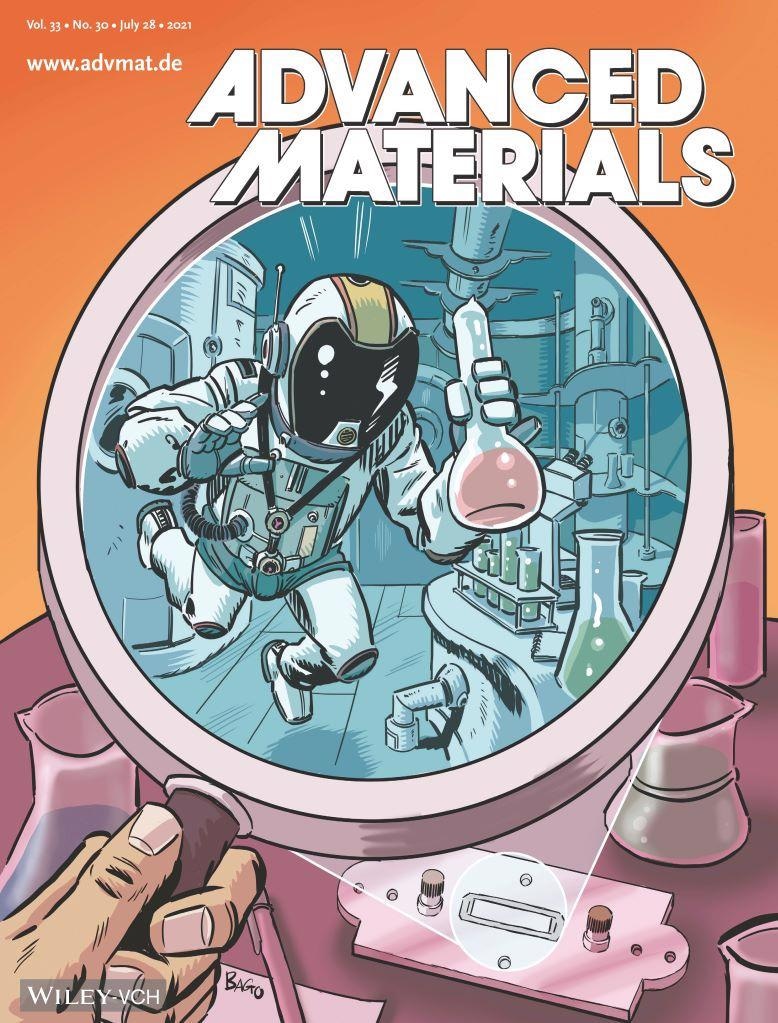Crystallization studies carried out in space laboratories, which are unaffordable and expensive for the majority of research labs, demonstrated the beneficial effects of microgravity during the crystal growth process and the morphogenesis of materials.
 The image of the Advanced Materials front page has been drawn by the comic illustrator Adrián Bago. Image Credit: University of Barcelona.
The image of the Advanced Materials front page has been drawn by the comic illustrator Adrián Bago. Image Credit: University of Barcelona.
Recent research headed by scientists from the University of Barcelona helped develop a simple and feasible process to achieve experimentation conditions of microgravity on Earth that mimic those in space. The findings have been published in the Advanced Materials journal, and the article features on its front cover.
To achieve the simulated microgravity conditions, the scientists employed tailor-made microfluidic devices with which they developed the 2D porous crystalline molecular structures.
We confirmed that the experiments under these simulated microgravity conditions have unprecedented effects on the orientation, compactness, and generation of 2D crystalline and porous materials.
Josep Puigmartí Luis, Researcher, Department of Physical Chemistry, Catalan Institution for Research and Advanced Studies
Josep Puigmartí Luis is also a member of the Institute of Theoretical and Computational Chemistry (IQTCUB).
To develop this novel system, the team of scientists, which includes researchers from the Catalan Institute of Nanoscience and Nanotechnology (ICN2) and the Institute of Materials Science of Barcelona (ICMAB-CSIC), created a microfluidic device that encompasses two interlinked substrates with a fine silicone film with variable thicknesses (from 200 μm). The intention was to develop a microfluidic environment 6 cm in length and 1.5 cm in width.
One of the surfaces has two machine inlet ports that allow the complete filling of the microfluidic environment and stop the appearance of air bubbles. The system permitted the growth of a 2D metalorganic framework prototype (MOF) of Ni3(HITP)2 composition, which formed a millimetric layer devoid of defects. It has conductivity properties that act at long distances under environmental conditions.
Until now, the values obtained with this newly devised method have been accomplished outside an inert atmosphere with pellets processed under high pressures.
This new simulated microgravity system will be like a ‘playground’ for chemists, physicists, and materials scientists who want to process 2D functional devices and materials.
Josep Puigmartí Luis, Researcher, Department of Physical Chemistry, Catalan Institution for Research and Advanced Studies
Journal Reference:
Contreras-Pereda, N., et al. (2021) Synthesis of 2D Porous Crystalline Materials in Simulated Microgravity. Advanced Materials. doi.org/10.1002/adma.202101777.